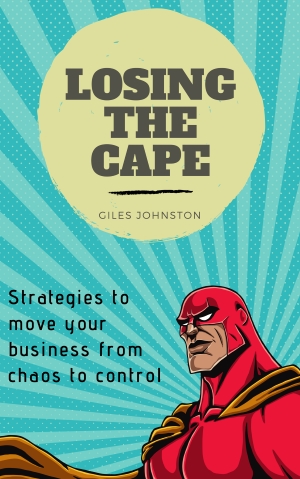There is a lot to be said for being a rule breaker. Changing convention. Breaking new ground. Being seen as a revolutionary.
But, what about being a rule player?
Could this be the new ‘cool’?
What are your rules?
As organisations grow and expand, they gain more moving parts. These can be people, machines, software and more… The increased complexity needs rules in order to function properly.
We document these as our policies, processes and procedures. We train them into our teams when the rules change and as new team members join us.
If we’re able to, we can automate some of these rules. Software is great for doing this and this is becoming more and more commonplace.
Making sure that everyone knows what the rules are is key to a growing and thriving business.
What if the rules need to change?
If something isn’t working, what do you do?
Breaking the rules and ignoring the processes is a common approach. This approach, however, isn’t the most effective one (most of the time). The rules are probably there for a reason. There are most likely to be teams that need the process to work in a certain way.
So, this gives us three camps:
- Rules that make sense and work well.
- Rules that no longer make sense.
- Rules that appear sub-optimal for parts of the organisation.
Dealing with the change
Taking these three groups we have three main routes:
- For the rules that make sense, we can focus on ensuring our training of new and existing staff is both effective and efficient.
- The rules that no longer make sense are perfect candidates to propose something else, or to remove them entirely. This is a perfect opportunity to use the change management process you have in place in your business.
- When you find a rule that doesn’t appear to be serving all interested parties, you have the opportunity to find out from the other groups why it exists and what effect it is having. From there you can choose to keep it (and train it out) or explore changing it / removing it.
Keep it simple
Although I could spend longer writing about this subject, keeping it simple is likely to be the best option.
Instead of being a rule breaker, being a rule manager is a better way forward for most organisations.
If you have team members that continuously flout the rules then we, again, have a number of options:
- Ignore the situation and hope for the best outcome (I don’t recommend this approach!).
- Discipline them, until they conform (or leave).
- Ask them to get involved with rule management and empower them to challenge the status quo or, at worst, understand why the rules are in place (my preferred approach).
Losing the Cape
When rules get broken there is most likely a negative outcome. This might not happen immediately, it might take time for the problem to manifest itself.
When a problem, or crisis, appears you often see certain staff members leap into action. This group are seen as the superheroes of the business and it is what led to me write the book Losing the Cape.
Rule management is all part of the strategy to reduce the need for superheroes in a business. Steady, productive, effective, crisis free working is the vision for this strategy.
If you’d like more ideas on how to remove the chaos from your business and reduce your reliance on superheroes then check out Losing the Cape.
The book is available from Amazon, Apple Books and most online e-reader stores.
